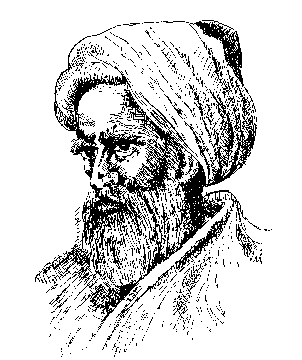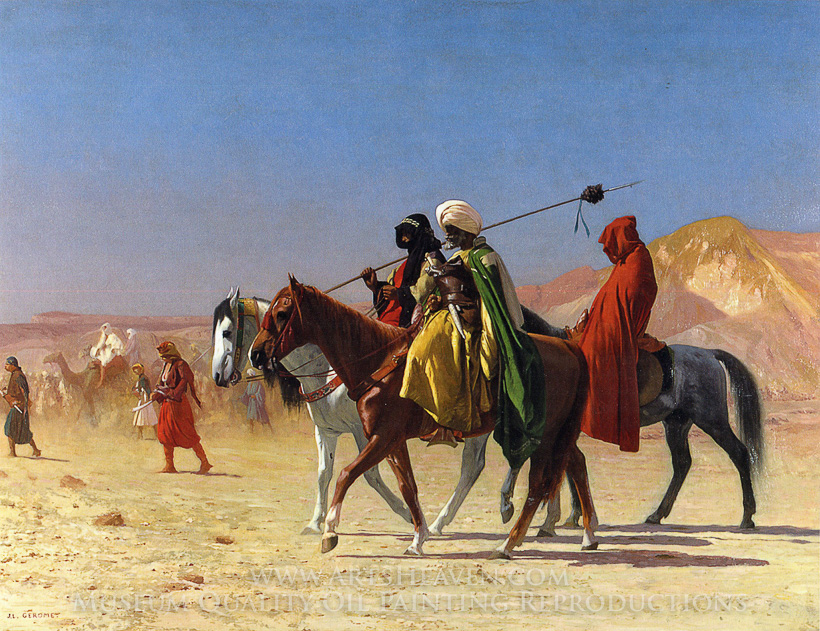
January 26, 2018, by Brigitte Nerlich
Historical fiction: A forgotten corner of science communication?
I recently read a wonderful tale about a 10th-century Arab philosopher, theologian and mathematician, Ibn al-Haytham (Alhazen). This wasn’t a biography (although I read that as well, afterwards); it was historical fiction – a historical novel. The tale was told by Bradley Steffens and entitled The Prisoner of Al-Hakim (2017). Immersed in the novel, I learned, without even noticing, things about optics, geometry, maths, science and faith, women and science, and Arab history, politics and culture; most importantly though, I was transported into a century and into a science culture I had not hitherto visited in other historical novels or popular science books. (I did however have a chance to get to know some Arab philosophers when studying philosophy at the Heinrich-Heine-Universität Düsseldorf in the early 80s; a rare opportunity)
After I had finished the book, I thought: Has anybody looked at historical fiction like this as part of research into science communication? I searched high and low and I couldn’t find anybody in the science communication and/or public engagement with science community who had researched that topic. If you know about some research into scicomm and historical fiction, please let me know!
A personal journey
When I was a youngster in the early 60s, I read all sorts of stuff: e.g. Karl May’s adventure stories, which made me run through the German forests like an Apache; an autobiography of Heinrich Schliemann, which almost turned me into an archaeologist; and, of all things, a book called Désirée, a fictional novel by Annemarie Selinka about Napoleon’s first love, which was, according to my mother, somewhat schmaltzy. But I loved it as a 12-year-old and I think, indirectly, it might have kindled my interest in French language and culture and the 19th century, and, after some detours, that’s what I wrote my PhD about (a much stodgier affair though, dealing with 19th-century French linguistics).
I spent my student life devouring as much French literature as I could (a copy of Marivaux’s La Vie de Marianne was stolen from my tent in the North African desert and I still wonder what the thief made of it!).
I only gradually came back to historical fiction in the English period of my life which started in 1985, when I came to Oxford. In 1987, I found a copy of Sarum, by Edward Rutherford, in an Oxfam shop and the novel provided a great introduction to British history and culture, just when I needed it. I followed that up in 1989 with Ken Follett’s Four Pillars of the Earth about the building of Salisbury cathedral and I began to see cathedrals in a new light. There were more such novels, but I can’t list them all.
Around the year 2000, when we began to set up the Institute for Science and Society here at the University of Nottingham, my interests shifted from ‘history history’ to ‘history of science’ in the broadest sense. At that time, my sister gave me her battered copy of Earthly Joys (1998) by Philippa Gregory (followed by Virgin Earth, 1999). These books made me look at tradescantia in a whole new light and I bought a couple of these beautiful blue flowers for my garden. Reading these books also meant that I now swear a little bit under my breath whenever I go and visit the Ashmolean Museum in Oxford, as I learned how Elias Ashmole (it seems) tricked the botanist John Tradescant (the Younger) into bequeathing him his collection of exotic plants, mineral specimens and other curiosities from around the world – the start of the Ashmolean. And on a summer holiday in Dorset, while enjoying trips to the Jurassic Coast, I had to read, of course, Tracey Chevalier’s Remarkable Creatures about Mary Anning and Elizabeth Philpot and their passion for fossils.
Communication as sharing
All these books spoke to me. They made me see the world in different ways and behave in the world in different ways (from seeing cathedrals in a new light to buying flowers for my garden). What is more though, and more important: they made me talk with others about these new worlds I was discovering. I spread the word about these worlds.
In my last post about Frankenstein, I quoted this tweet: “I am reading the octopus book. My main hobby now is looking up from the octopus book in order to share octofacts.” This book communicated science and made the reader communicate science. That’s the hallmark of great science communication. In my view historical fiction can do a similar job.
In a recent blog post, Mark Henderson inverts the pejorative metaphor of ‘teaching to the choir’ which is used to characterise some types of science communication. He points out that “we forget that choirs once had a very practical function. They were a communication channel, a way of framing Christianity’s message for a mass audience. Priests preached to the choir so its singers would spread the Gospel to the widest and most diverse possible congregation.”
Good popular science books and good popular historical (science) fiction books can lead to a type of ‘social sharing’ of science (‘science communication’) that Henderson seems to advocate, that is, a sharing that happens between ‘persons like oneself’, rather than between what one might call a master and an apprentice.
The Prisoner of Al-Hakim
This sharing happened yet again when I read The Prisoner of Al-Hakim. I told my family at Christmas about what I was reading, what the book was about, why I found it exciting. In this instance, I told them (including my son, who is a scientist and mathematician) about how an early Arab philosopher came to realise that the only way to engage people with scientific truths (in this case relating to optics) was through the experimental method, through demonstrating experiments in public (what Steffens calls ‘true demonstration’), something that Bacon and the Royal Society would only cotton onto centuries later. What Ibn al-Haytham wanted to do was to make science (in) public!!
This is also what good historical fiction does; and scholars interested in science communication might want to take note of this. I leave you with a sentence from one of the Amazon reviews about the book which is quite revealing in this respect: “Several things I must mention from the start. I am not a math and science person, but I love historical fiction.” And another one said something we should all think about in the context of the world we live in now: “This story was full of unexpected turns and eye opening ‘teachings’ from a culture that we have been taught was totally worthless.”
Go read the book. You won’t be disappointed. You might learn something on the journey (accompanying Ibn Al-Haytham on his journey from Basra to Cairo). Most importantly, you will see the world (of science and culture) differently afterwards; you might even behave differently, do things, including science and science communication, differently.
Images: Portrait of Ibn Al-Haytham (wikimedia commons); Arabs crossing the desert (Jean-Leon Gerome, Google images, free for reuse)
PS: added 18 February 2018. For those interested to learn more about Ibn Al-Haytham, there is now an article in The Journal of the International Society for the History of Philosophy of Science

“In this instance, I told them (including my son, who is a scientist and mathematician) about how an early Arab philosopher came to realise that the only way to engage people with scientific truths (in this case relating to optics) was through the experimental method, through demonstrating experiments in public (what Steffens calls ‘true demonstration’), something that Bacon and the Royal Society would only cotton onto centuries later. What Ibn al-Haytham wanted to do was to make science (in) public!!”
I think that belongs to the fictional part of your historical novel rather than the factual part.
I suppose I might have overstretched the point Bradley Steffens tried to make to create a nice narrative 😉
Steffens wrote a non-fiction book about Ibn al-Haytham which is historical crap of the first order. He like many others vastly overestimates the role that experimentation plays in Ibn al-Haytham’s optics. A. Mark Smith who is a real expert on al-Haytham’s optics thinks there is a strong possibility that he never actually carried out most of the experiments that he outlines and that there were in reality merely thought experiments.
Ah historical facts destroying my fictional historical illusions. But I suppose that’s a good thing in the end!
The actual Ibn al-Haytham wrote at the beginning of ‘The Book of Optics’: ‘I formerly composed a treatise on light and vision in which I employed persuasive methods of reasoning, but when true demonstrations relating to all objects of vision occurred to me, I started afresh. Whoever, therefore, comes upon the said treatise must know that it should be discarded.’ This was the moment when pure reasoning was replace by concrete experimentation. Anyone who doubts that needs to read ‘The Book of Optics’ for themselves. Ibn al-Haytham was systematic. He said that he would not include anything that he could not prove with a geometric proof or a true demonstration.
Thanks for this clarification!